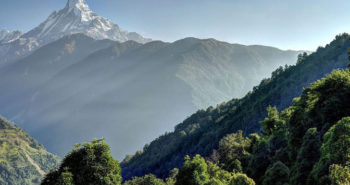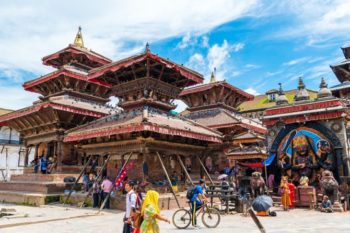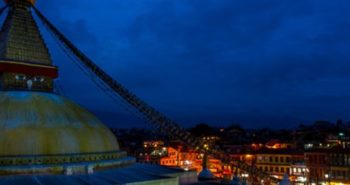Helambu Trek Costs
Like the cost of other trekking trails, Helambu trek is also affordable and worth every penny. In general, the Helambu trek costs around $500-$1000. In this affordable price, you can collect millions of memories in the Helambu region, that has both culture and natural beauty preserved.
Helambu trek costs depend on your personal travel costs, clothing, gear costs, the season in which you choose to trek, insurance costs, permits, your food and accommodation choices, guides and porters and other miscellaneous costs.
Helambu Trek Costs
Your total Helambu trek costs depend on the package you choose and also on other factors. Here is a detailed description of all the factors that make up your trek costs.
Cost of Your Clothing and Trekking Gear
Trekking requires proper clothing and gears. You will need clothes that will protect you from the weather in the mountains. The clothes should also be comfortable and absorb sweat while walking. If you have such clothes, you may not need to spend money on trekking clothes.
You can find trekking gears in stores in Thamel for a reasonable price. If you do not want to buy the gears, you may rent them as well. You can rent the trekking gears for $1- $10 to save some money and only spend on clothes.
The Cost of Transportation to The Starting Point of Your Trek
Helambu trek starts from Sundarijal. You can get local buses that run from Old Bus Park in Kathmandu up to Sundarijal which will charge you between $1-$2.
Insurance Costs
It is always safe to get insurance before you travel, especially if you plan to trek. There are many risks such as luggage loss, flight cancellation, accidents, disasters etc. Travel insurance, usually, covers all these risks for a month (30 days) and costs $150.
They also provide you helicopter evacuation to a height of 6000m. You can find cheaper or more expensive insurance as the prices vary according to companies.
Permits
For Helambu trek, you will need to get two different permits: TIMS and Langtang National Park Permit. Since you will pass through Shivapuri National Park on your trek, you should also pay the Shivapuri National Park entrance fee.
TIMS
TIMS is a paper card that carries information about the trekkers. If you are a foreign national who is trekking alone, TIMS card costs around $20 per person. But, if you trek in a group, you will only have to $10 for your card. If you are a citizen of the SAARC countries, it costs around $6.
You can get it from Nepal Tourism Board in Kathmandu or the starting point of your trail.
Langtang National Park Permit
Trekking in Helambu region means you are entering and exploring the parts of Langtang National Park. So, for the Helambu Trek, you have to get a Langtang National Park entry permit for $30. In addition, you will also have to pay 13% VAT.
Shivapuri Nagarjuna Park Entrance Fee
You will have to pass through Shivapuri Nagarjuna Park in your Helambu trek. This requires you to pay the entrance fee. A foreign national will have to pay $5 excluding 13% VAT. But the citizen of SAARC can enter the region after paying $3.39 excluding VAT.
You can get both the permits from Nepal Tourism Board, Kathmandu. While you will have to pay the entrance fee at Sundarijal, the entrance of the national park. Magical Nepal can assist you in getting these permits.
Update:
After decentralization, October 1, 2017, the TIMS card required to trek in the Everest region is replaced by a Local Area Permit which costs $20. The price is the same for both organized and independent trekkers.
This has also come into practice in the Langtang region from October 2018. You will need to get the Local Area Permit to trek here. TIMS card is not valid anymore in this region.
Seasons
Like the Langtang valley trek and Gosainkunda trek, the best seasons for Helambu trek are also Spring(March, April, May) and Autumn(September, October, November). In this season, the skies are also clear and you get to enjoy the best view of the mountains. So, many trekkers opt for this season to trek.
If you trek in the peak seasons, the total costs for Helambu trek can be more than in offseasons. Due to the inflow of many trekkers, you may not be able to bargain for food and accommodation prices in the peak seasons. But, if you go for a trek in offseasons, you can bargain or the teahouses may offer you discounts on their services.
Your Itinerary Plan- Is It a 5 Day or 9-Day Plan?
You can opt for a 5 day or 9-day itinerary for Helambu. Obviously, if you choose a 9-day itinerary plan, you will have to pay more for all the services you take. With the longer days on the trail, you will have to spend extra on food and accommodation which increases the overall cost of your trek.
So, before you plan the trek, pick the itinerary plan that fits your budget and your physical ability.
Your Accommodation Preferences
Your journey starts from Kathmandu. Here you will find a range of accommodation options ranging from basic to luxurious hotels. It can range from $5-$150 or even more depending on the type of accommodation you take. You can find a decent place to stay for $50 per night in Kathmandu.
While as you proceed on the trail, the cost and availability of accommodations differ with that of Kathmandu. On the highest point of your trek, Tharepati Pass (3650 m), the accommodation services are basic. Even though basic, you will find comfortable services. But you may not expect anything fancy here.
The accommodation charges may range from $4-$5 both in peak and offseasons. The room may come to you at a cheaper price if you can bargain. If you want a single room at higher altitudes, you may have to pay more. Please do note that it might not always be possible to get a single room at higher altitudes.
Your Food and Drink Choice
There are many teahouses in the trekking trails that offer a range of food and drink options. Both alcoholic and non-alcoholic beverages are available in the trail. All the teahouses offer a range of options for breakfast, lunch, dinner, and beverages. You can find black tea, milk tea, coffee, hot lemon, etc. as drink options.
For food, you can pick from pancakes, soup, DalBhat, pasta, noodles, macaroni, and more. In the lower regions, the food costs may range between $2-$3 but in higher altitudes, the charges can be from $5-$8.
The bottled water charges also increase with the increase in altitude. In lower regions, it costs around $0.25-$0.50 but in higher altitudes, it can cost up to $3.5.
This is because there are no motorable roads to higher altitudes. Either people have to carry the items or transport them on mules or even helicopters.
Guides and Porters
If Helambu trek is your first trek, it is good to hire both guide and porter. A guide will help you find your way in the mountains. They will narrate you about the local culture and help you communicate with the locals. Plus, they ensure you the best accommodations and meals.
You can hire a licensed guide for $20- $25 per day.
A porter helps you carry your luggage on the trail so that you trek easily. You can hire them for $15- $20 per day.
Hiring a guide and a porter will be a wise decision you will make because they help you a lot in many ways. You will feel much safe and relieved while walking with them.
Extra Services You Take in the Mountains
At higher altitudes, you may have to pay around $2-$5 for charging your phone and batteries, wifi etc. But during offseason, you may get to enjoy these facilities free of cost as well.
Miscellaneous Costs
Miscellaneous costs include tips to guides and porters, souvenirs from mountains and donations. The amount you spend on these costs depends completely on you. These costs are not compulsory but you may like to spend some penny if you are really happy with the trekking.
Tips To Cut Your Helambu Trek Costs
If you can cut down unnecessary costs on your trek, it can help you in case of an emergency. Here are some tips that can help you lessen your Helambu trek costs:
- You may carry a power bank to save money on phone and battery charging. The teahouses may charge you extra for charging facilities. Instead of spending money on charging at every stop, invest in a good power bank. It will help you wherever you travel in the long run.
- It is a good idea to carry your own snacks for your trek. You can find granola bars, chocolates, nuts etc. cheap in Kathmandu. On the trail, you will have to pay for these snacks much higher.
- If you are fond of tea, you can carry some tea bags. You can then pay for the hot water and make your own tea.
- It is a wise idea to carry only what you need. You should look at your itinerary plan and pack clothes and other items in accordance. The heavier your pack, the more difficult it gets in the route. You can save the cost of a porter if you pack only one bag and carry it throughout your trek.
- Your total trekking cost depends on your trekking equipment. You can save money on trekking gears by renting them for $1-$10 per day. If you do not want to rent, you can find reasonable stores in Thamel. You might have to spend some time shopping to find reasonable stores.
- It is a good idea to plan your trek beforehand instead of going on impromptu. Even though spontaneous plans are fun, they might not favor your pocket. You may have to pay extra for unplanned trips.
- Trekking in groups will save you a lot of money. Unless going solo to the Himalayas is on your bucket list, we recommend trekking in groups. You can ask for discounts on food and accommodations as well.
- You may choose to eat local food like DalBhat on your trek to save money on food. The cost of this Nepali staple food is quite cheap in comparison to other food choices. DalBhat is nutritious and sustains you throughout your trek.


